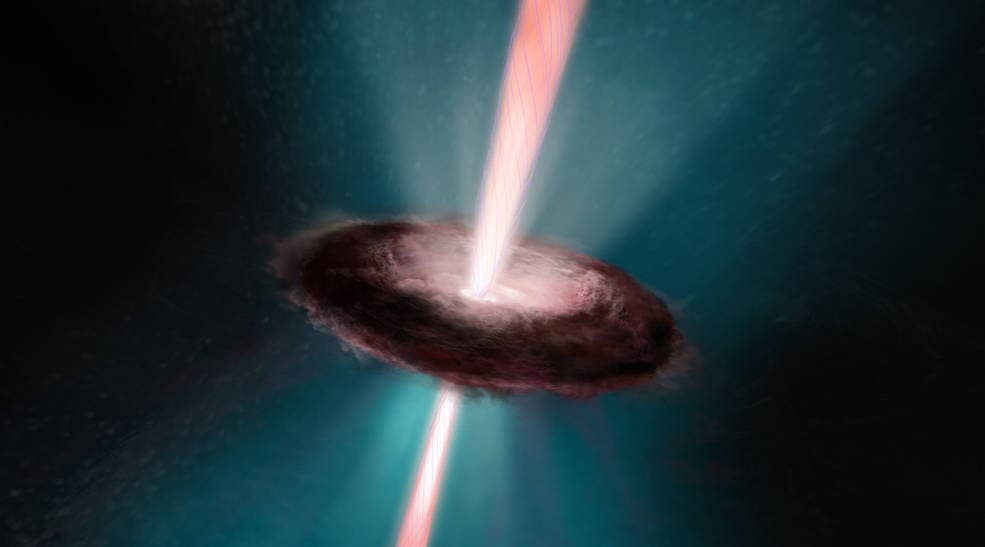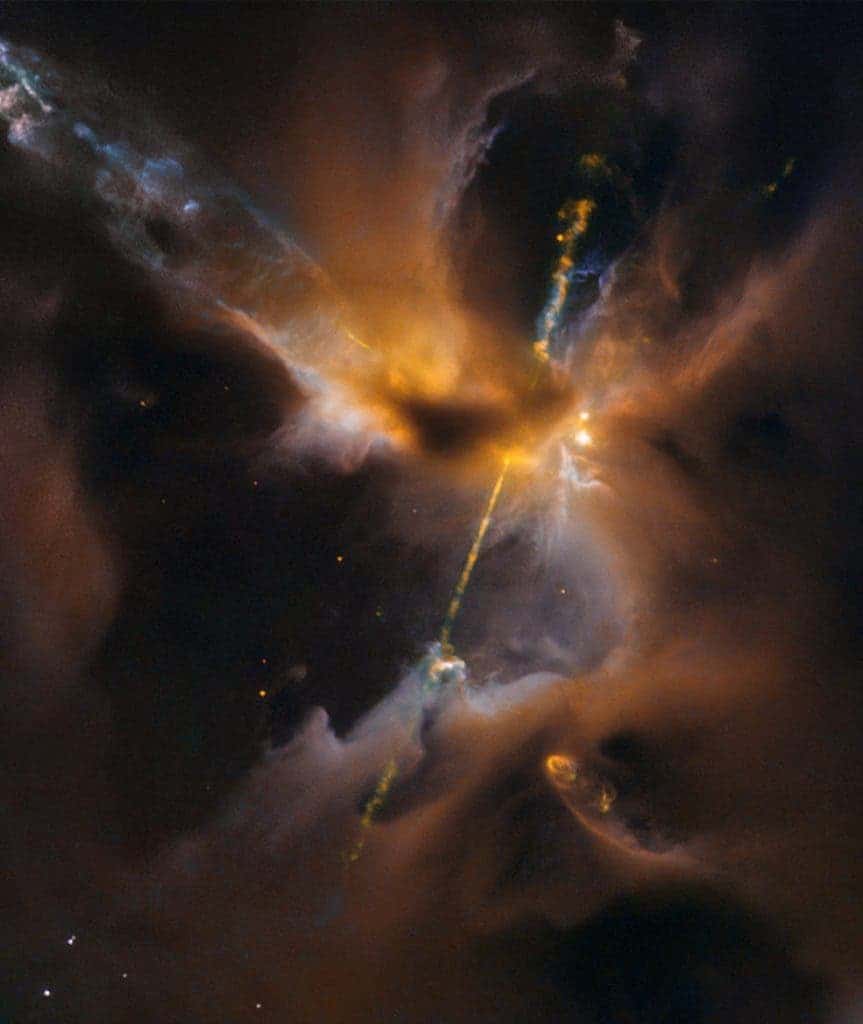In a galaxy far, far away the Orion B molecular cloud complex, located some 1,350 light-years away, the Hubble telescope imaged a rare act in the making: a newborn star. In such conditions where there are large pockets of cold molecular hydrogen, some of the material collapses under gravity to form a rotating, flattened disk encircling the newborn star. The star feeds on this accretion disk, and shoots some of it as superheated matter outward from the star down its rotational axis. In the plane Hubble was facing when it captured this moment, the event looked a double lightsaber. Just in time for the release of the new “Star Wars Episode VII: The Force Awakens.”
“Science fiction has been an inspiration to generations of scientists and engineers, and the film series Star Wars is no exception,” said John Grunsfeld, astronaut and associate administrator for the NASA Science Mission directorate. “There is no stronger case for the motivational power of real science than the discoveries that come from the Hubble Space Telescope as it unravels the mysteries of the universe.”

This is an artist’s concept of the fireworks that accompany the birth of a star. The young stellar object is encircled by a pancake-shaped disk of dust and gas left over from the collapse of the nebula that formed the star. Gas falls onto the newly forming star and is heated to the point that some of it escapes along the star’s spin axis. Intertwined by magnetic fields, the bipolar jets blast into space at over 100,000 miles per hour. As seen from far away, they resemble a double-bladed lightsaber from the Star Wars film series.
Credits: NASA, ESA, and A. Feild (STScI)










